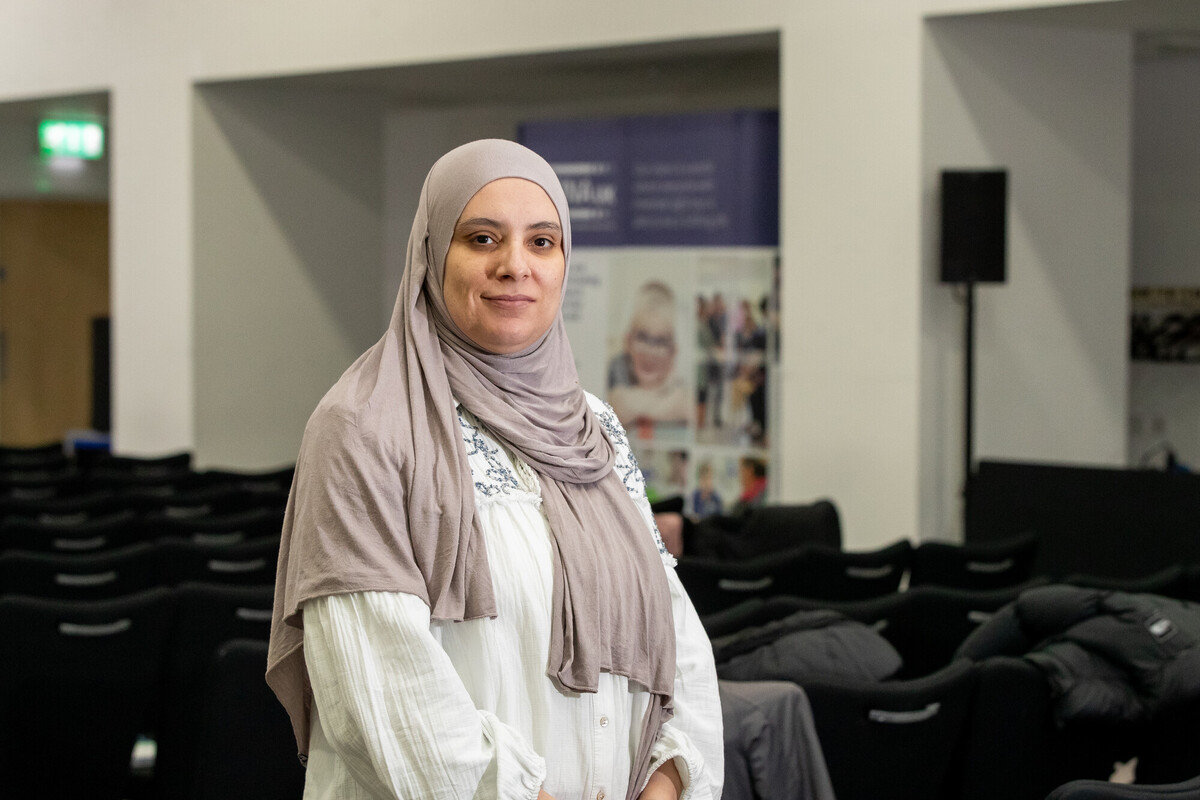
Meet a researcher: Hassina Zeriri
Hassina Zeriri holds qualifications in pharmacy and pharmacology and started her career in genetics research laboratories. Nearly ten years ago, she was diagnosed with Stargardt disease, an inherited retinal condition that is principally associated with loss of central vision.
However, Hassina experienced a disturbing additional symptom: seeing bright flashes of light that weren’t really there, a phenomenon known as photopsia. “The flashes could be really scary” Hassina tells us. “The sudden appearance of a glowing shape that obstructed my field of vision was so alarming.”
Her ophthalmologist dismissed the photopsia as having nothing to do with Stargardt disease. “That was so frustrating, and just added to my anxiety. I couldn’t help but start wondering if this symptom was actually a sign of a different issue affecting the eye or brain” she said.
Hassina’s professional interest and personal experience had drawn her towards eye research. Whilst working as a research assistant at the Visual Perception and Repair Lab at UCL’s Institute of Ophthalmology, she shared her experience of photopsia, describing just how frightening it could be.
Her colleagues were incredibly supportive and encouraged an investigation. They joined forces with Professor Omar Mahroo, consultant retinal specialist at Moorfields Eye Hospital, to conduct a pilot study to find out whether photopsia in Stargardt disease was a more widespread problem.
“With the help of Stargardt’s Connected, we sent out a survey to people living with the condition” Hassina explains. “More than 90% of participants confirmed that they were experiencing photopsia, and many gave moving testimonies about how relieved they were that this symptom was finally being considered and taken seriously.”
And so, a more in depth research proposal was born! This will now form Hassina’s PhD studentship project, funded by Retina UK and the Macular Society and supervised by Professor Mahroo and Dr Matteo Rizzi.
“I will conduct wider surveys to confirm the proportion of those living with Stargardt’s who experience photopsia and another debilitating symptom called photophobia, an extreme over- sensitivity to light” Hassina explains. “The questionnaires will gauge the extent to which these symptoms impact vision and daily life. I will then look at participants’ medical records to see if there are correlations with disease progression and other clinical and genetic factors. We will be investigating the mechanisms behind the symptoms too: a better understanding of this could suggest approaches for symptom management and even the underlying disease.”
A project like this couldn’t happen without the generous contribution of those living with sight loss. “It’s so important for people to share their experiences with researchers through participation in studies” Hassina said. “Clinicians and researchers need an in-depth understanding of what people are going through at every stage of the condition.”
“It can sometimes be emotionally challenging being connected to the disease I’m working on, including anxiety for the future. However, the benefits are significant; I have a personal motivation to find answers, I can bring a unique personal perspective, and I feel empowered knowing that my work could help others like me.
This first formal characterisation of photopsia and photophobia will be interesting in its own right, but recognition of these symptoms by clinicians will provide validation for their patients and support communication on what to expect as the condition progresses.”
Hassina will primarily be recruiting Moorfields Stargardt’s patients and those registered with Research Opportunities at Moorfields (ROAM) (research.moorfields.nhs.uk). If you are living with Stargardt’s and would like to take part, Hassina can be contacted via [email protected].
